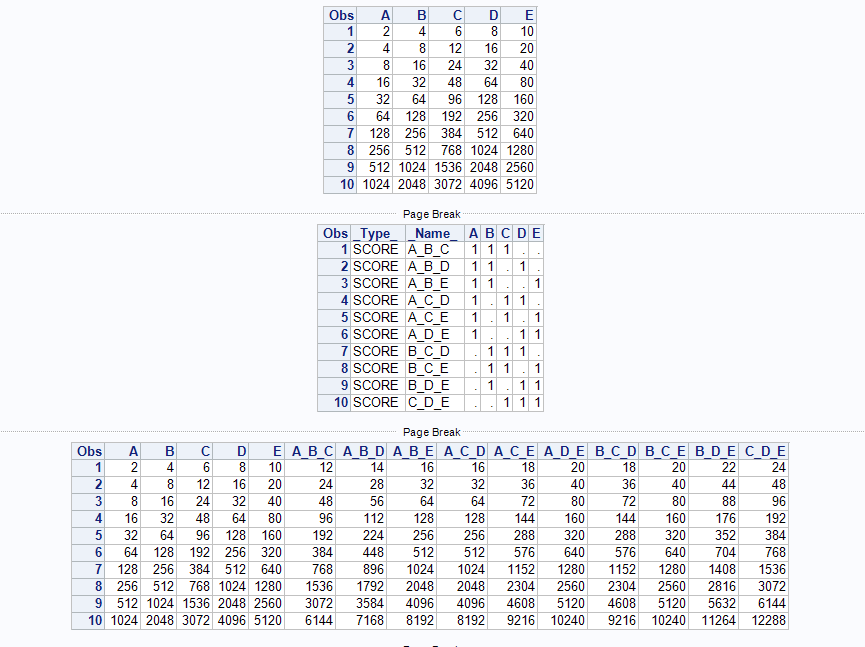- Home
- /
- SAS Communities Library
- /
- LEXCOMBI
- RSS Feed
- Mark as New
- Mark as Read
- Bookmark
- Subscribe
- Printer Friendly Page
- Report Inappropriate Content
LEXCOMBI
- Article History
- RSS Feed
- Mark as New
- Mark as Read
- Bookmark
- Subscribe
- Printer Friendly Page
- Report Inappropriate Content
The thread "Need help with sas macros" https://communities.sas.com/thread/71429 which has little to do with macro, got me to thinking about how this is a nice example of an application of LEXCOMBI.
Using LEXCOMBI allows the program to be parameterized with regard to the variables processed and the number of variables that are added together.
data test;
array _v[*] A B C D E (1:5);
do _n_ = 1 to 10;
do _i_ = 1 to dim(_v);
_v[_i_] = _v[_i_] * 2;
end;
output;
end;
drop _:;
run;
proc print;
run;
*parameters;
%let varlist=A-numeric-E;
%let k = 3;
data score;
retain _Type_ 'SCORE';
length _Name_ $32;
if 0 then set test(keep=&varlist); *get variables list into array;
array _varlist[*] &varlist;
array _i[&k] _temporary_; *dim(_varlist) choose dim(_i);
__n_ = dim(_varlist);
__k_ = dim(_i);
__ncomb_ = comb(__n_,__k_);
do __j_ = 1 to __ncomb_;
__rc_ = lexcombi(__n_,__k_,of _i[*]);
call missing(_name_,of _varlist[*]);
do __h_ = 1 to dim(_i);
__ii_ = _i[__h_]; *VNAME does not accept double subscript reference;
_name_ = catx('_',_name_,vname(_varlist[__ii_]));
_varlist[__ii_] = 1;
end;
output;
end;
stop;
drop __:; *double leading underscore so we can drop easily;
run;
proc print;
run;
proc score data=test score=score out=scored;
var a--e;
run;
proc print;
run;

April 27 – 30 | Gaylord Texan | Grapevine, Texas
Registration is open
Walk in ready to learn. Walk out ready to deliver. This is the data and AI conference you can't afford to miss.
Register now and lock in 2025 pricing—just $495!
SAS AI and Machine Learning Courses
The rapid growth of AI technologies is driving an AI skills gap and demand for AI talent. Ready to grow your AI literacy? SAS offers free ways to get started for beginners, business leaders, and analytics professionals of all skill levels. Your future self will thank you.
- Find more articles tagged with:
- array
- data_step
- functions
- proc_score
